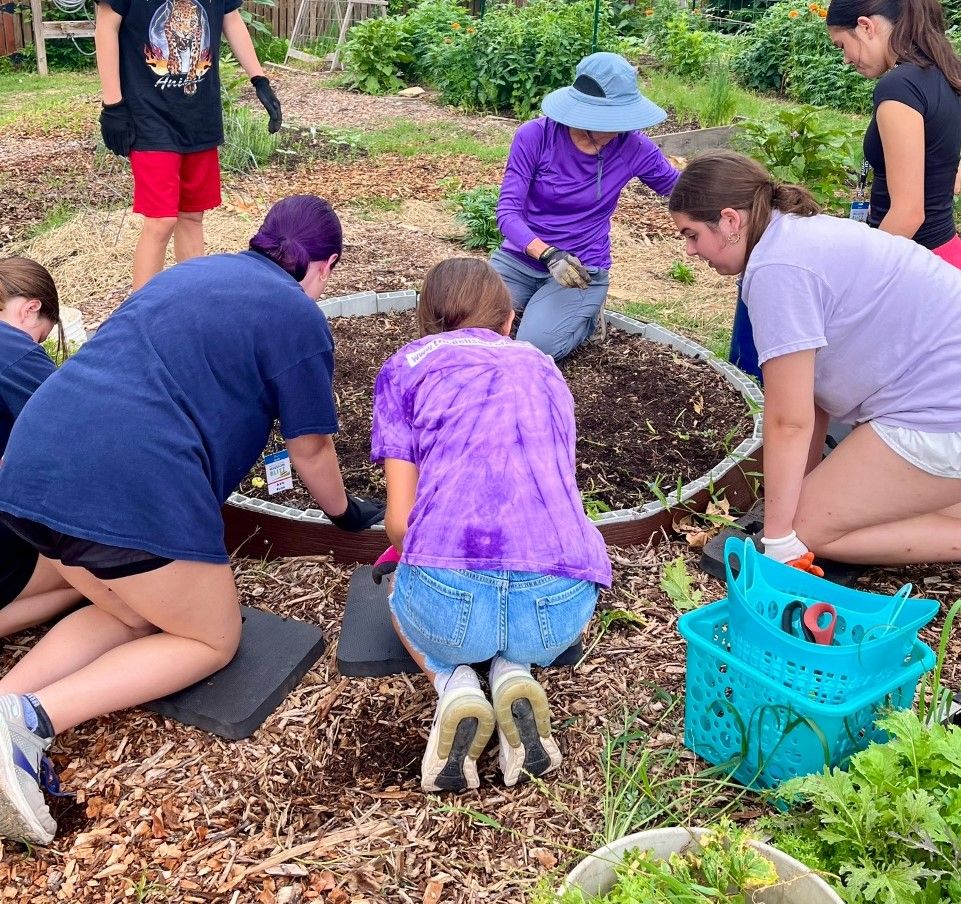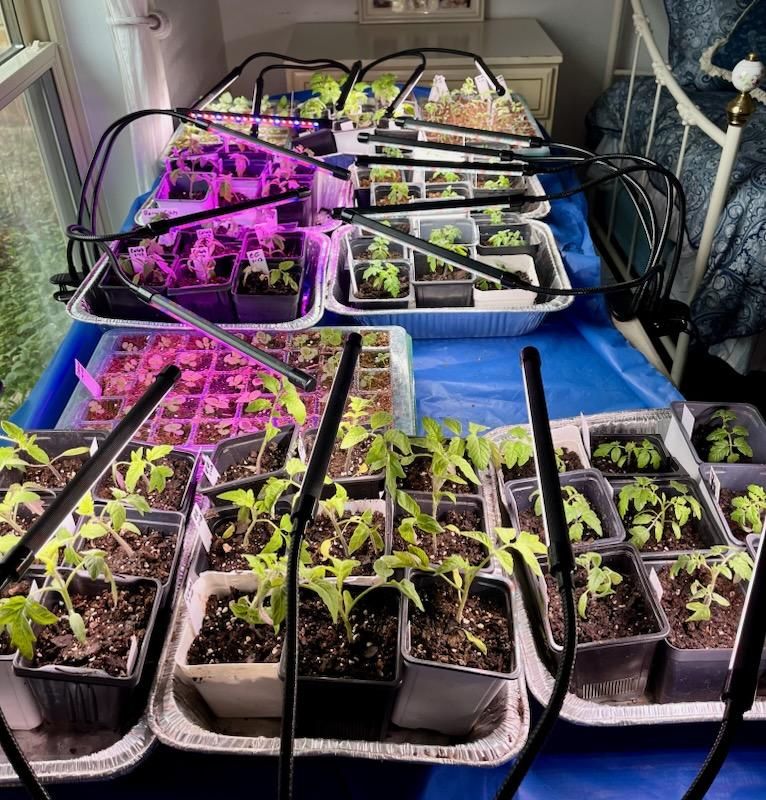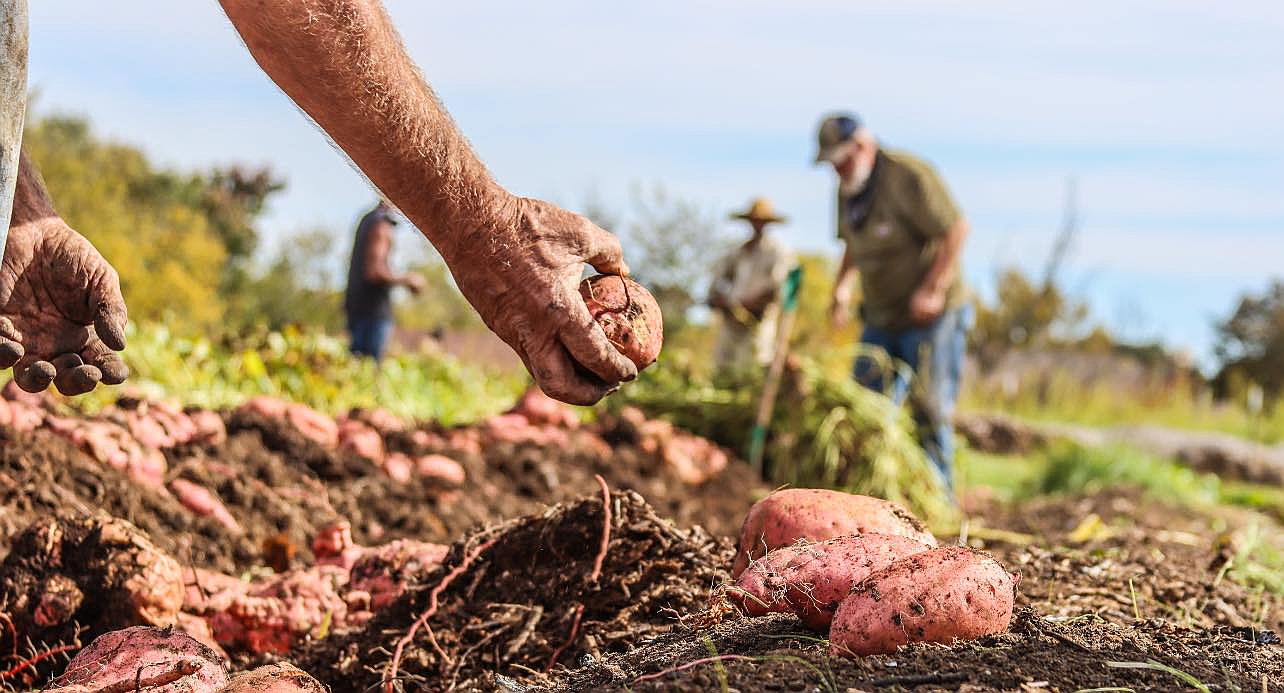🍅 That First Bite of Summer 🍅
There’s nothing quite like biting into a ripe tomato on a hot summer day — the burst of juice, the sun-warmed skin, the way the flavor seems almost impossible to find the rest of the year. So why is it that tomatoes taste so much better in summer?
☀ The Power of Sun and Heat
Tomatoes are heat-loving plants, and summer gives them what they crave: long days, warm nights, and plenty of sunlight. Those conditions help the fruit develop sugars, acids, and aromatic compounds in perfect balance while still on the plant.
In Texas, peak field harvests often run late May through July (with a second flush in early fall if weather cooperates). Many farmers harvest once tomatoes reach the breaker stage — just starting to blush — so they can finish ripening on the counter without risk of splitting or pest damage (Texas Agrilife Extension). Either way, summer harvests mean your tomatoes have traveled only a few miles, not across a continent, and were picked much closer to peak flavor.
🥕 Want to grow your own? Check out our
class to enjoy that just-picked flavor in your own backyard.🔬 The Science of Summer Flavor
Flavor isn’t just sweetness — it’s a trio of sugars, acids, and aromatics. Sunlight drives photosynthesis (more natural sugars), warm temps help convert plant starches to sugars, and ripening boosts tiny aroma molecules like hexenal (fresh, green) and geranial (citrusy).
Letting fruit finish on the vine is the key. When tomatoes are picked early and stored, those flavor compounds never fully peak — which is why summer, field-ripe fruit tastes so vivid.
Hydroponic and greenhouse systems produce excellent tomatoes year‑round. In controlled environments, flavor is often consistent—and studies show hydroponic tomatoes can achieve higher sugar/acid ratios than soil-grown ones, though they may miss a bit of the “terroir” complexity of field varieties, especially at peak season.
🌱 Read More: Hydroponics vs. Field Flavor — What’s the Difference?
🛒 Why Off-Season Tomatoes Often Disappoint
Outside summer, a large share of U.S. grocery-store tomatoes are shipped long distances — many from Mexico and, increasingly, Canadian greenhouses. To survive transport, they’re picked firm and early, then ripened off the vine. That protects the fruit, but it also means less sugar development and fewer aromatics, so the flavor lands flatter.
Even in Texas, where tomatoes shine in season, imports fill shelves much of the year.
🚚 Also read: Why Texas Imports Most of Its Food for the bigger picture of what ends up on your plate.
🍅 How to Get the Best Flavor Year-Round
- Buy local in season. Farmers markets and pick-your-own farms give you the best shot at vine-ripened fruit.
- Try different varieties. Heirlooms (complex), cherries (sweet), beefsteaks (juicy) — each has its moment.
- Grow your own. Even a patio pot can keep you in summer salads.
- Store smart. Keep ripe tomatoes on the counter, not in the fridge (chill only if you must slow softening).
- Watch for events. Tomato festivals — like Tomato Fest in Jacksonville, Texas — celebrate harvest with tastings and fun.
🌞 Savor the Season
Summer tomatoes are more than a salad ingredient — they’re a reminder of what real, seasonal flavor tastes like. Whether you grow them, visit a local farm, or hit your nearest market, now’s the time to enjoy them at their peak (and then keep an eye out for that early-fall flush).
🌿 Want to See Where They Grow?
There’s nothing like visiting a farm to taste and learn at the same time. Some farms focus on growing vegetables year-round, while others offer seasonal tours and workshops where you can see the whole growing process from seed to harvest. Browse upcoming farm experiences and workshops →
🍅 Explore More Farm & Garden Learning in DFW
📚 References
- Texas A&M AgriLife Extension (2024), How to Store Tomatoes — practical advice on harvesting at the “breaker stage” and ripening on the countertop instead of over-ripening on the vine.
- Tandon, S.L., et al. (2000), Flavor Compounds in Tomato Fruit — foundational research on the key sugars, acids, and aroma molecules that define tomato taste, including compounds like hexenal and geranial.
- Verdoliva, V., et al. (2021), Comparative Study of Hydroponic vs. Soil-Grown Tomato Flavor — analysis showing how greenhouse-grown tomatoes can match or even exceed sugar/acid ratios of field-grown fruit, with some differences in mineral complexity.









